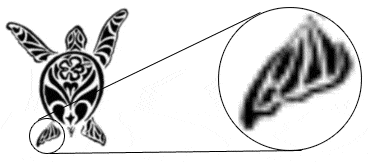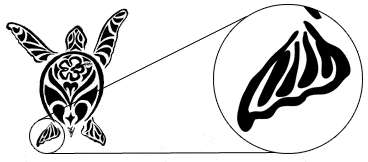Vector Format
Two Basic formats of image are
- Raster
- Vector
Raster :
Raster images are represented by individual pixels in row and columns. For example, take any .Bmp (Bitmap) file. Image is represented by grid of pixels, or say points of different colors.
Generally Raster format is used in display medium, for ex. Monitor, Paper etc.. In printing terms such images are referred as contones (continuous tones).Each pixels individually defines a color in raster image.
When it comes to printing, the major problem with Raster images is that they are resolution dependent. So we can not scale them to any resolution without loss of quality. Raster images deals practically with photographs.

Quality loss in raster images when scaled
Vector :
Vector graphics are represented by points, lines, curves or any other geometric primitives. All these primitives are based on mathematical equation. Vector graphics can be scaled to any resolution easily without losing any quality.
Vector art is best for printing. Because it is represented by mathematical curves (paths). So We can take same vector logo and print on Letterhead and enlarge it to print to sign boards. Therefore vector graphics is ideal for typesetting and graphics design.
Some of the famous vector file formats are .Eps (Encapsulated Post Script), .ai (Adobe illustrator format), .CDR (CorelDraw Format), SVG (Scalable Vector Graphics), PDF (Portable Document format), EMF (Enhanced Metafile), WMF (Windows Metafile), etc..

Quality maintained in vector images when scaled
Features of vector :
Editable Fonts : fonts in Bitmap or raster images can not be edited. Because fonts are converted to pixels of color, so no more editing is possible. On other side Vector Image represents fonts as either Curves (Paths or outline) or actual fonts. When the font in vector image is represented as font, it can be edited. While represented as curves, you can scale, rotate and other transformations without any quality loss.
Color Separations : Most Screen-printing jobs are done with spot colors. In screen-printing each screen has different color and their combined result produce the final print. When you are using vector art you do not have to worry about color separations, because vector graphics can be color separated very easily in contrast to bitmaps which can not be color separated.